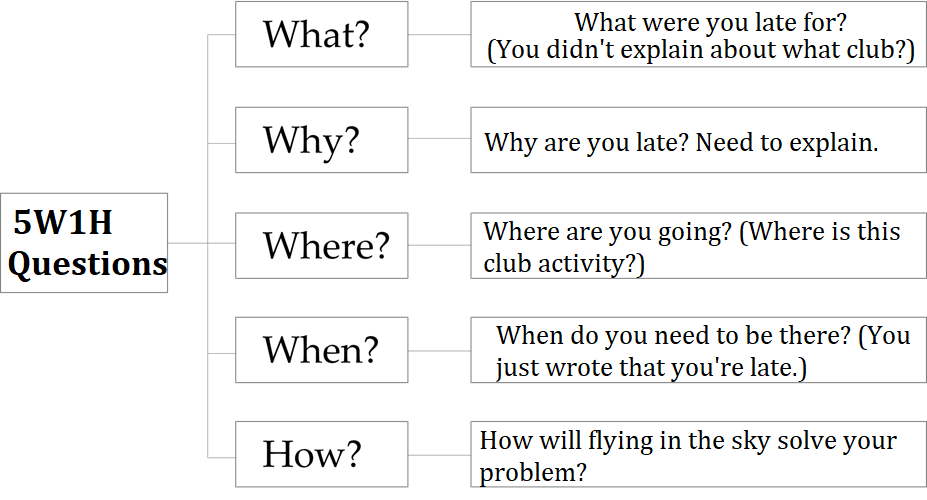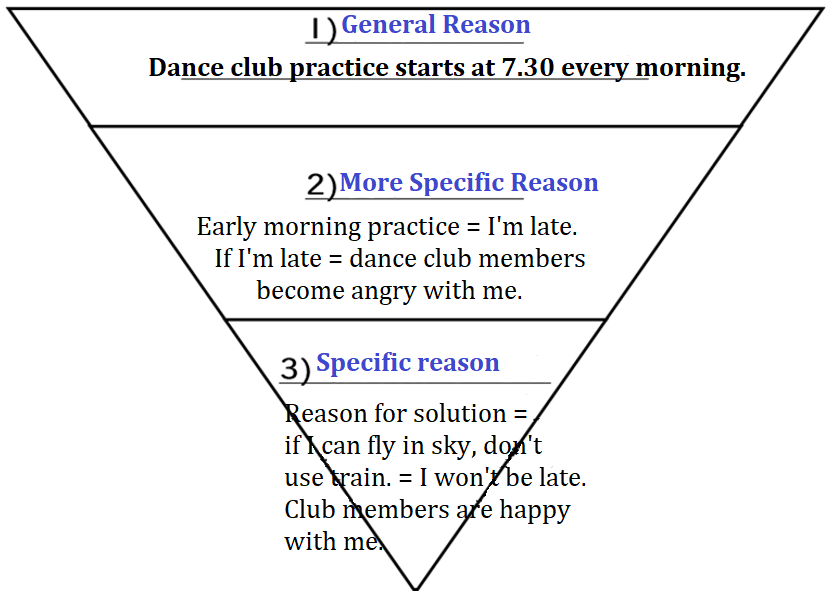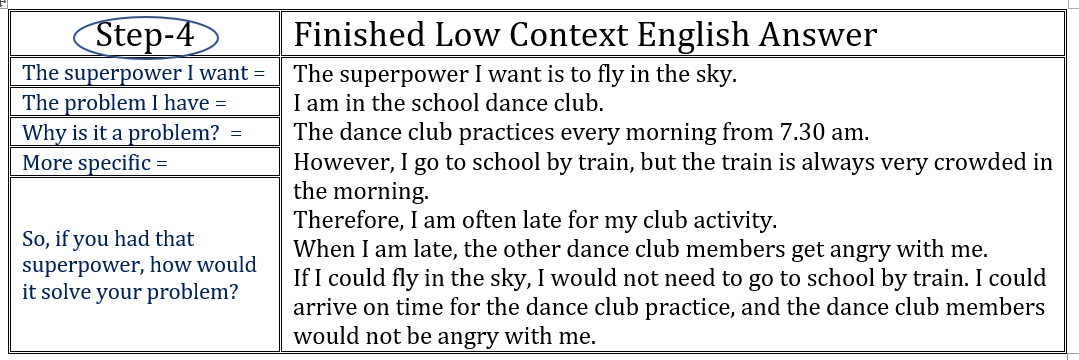lesson-1: High and low Context Languages

Compared to the Japanese language, English can be called a KY language. In English, understandig the context without saying it in words is difficult. This tpe of language is called a low-context language. On the other hand, languages like Japanese are called high-context languages. Understanding the linguistic and cultural differences between high-context and low-context makes it easier to write clear and powerful thoughts and opinions in English.
For today's homework reading, we'll look at what are high and low context languages?
Why do some countries have high-context languages, and other countries have low-context languages? Most importantly, we'll look at what are the key points that a Miyakojima High School student, needs to know about low-context languages.
First of all, what is a High Context language?

High-context and low-context are ways to describe cultural differences. In a high-context language culture a lot of communication is based on the cultural context, and not everything is explained clearly in language. High-context languages are in countries where most people understand the culture well, and so not all communication has to be put into words.
Many Asian languages are high-context, and Japanese is the highest context language in the world. For example, as a student in Japan, you speak Japanese and understand the complex relationships between your classmates, seniors and juniors in club activities, without having to communicate all of that in words. In Japan, the method of communication between seniors and juniors, in club activities, at work, and in society, requires a lot of understanding of Japanese culture. High-context language cultures often use communication that depends on the cultural context. Put simply, in a high-context culture, like Japan, a person needs to understand both Japanese language, and Japanese culture, to communicate properly.

On the other hand, in low context cultures, language is more direct, and everything needs to be explained in words. For example, English is a much more direct language than Japanese. Low context languages, such as English, use many words to explain personal thoughts and opinions. To communicate clearly in English you need to explain your ideas with words. Personal thoughts and opinions are expressed in a direct style.
To understand how to write clear English, it is very important to understand low-context language. For example, when you write an essay, take an English exam, or sit a university entrance exam, it is important to understand how to write what you think. The writing needs to be clear so that that any English speaker in the world can easily understand it.
The good news for you, is that you are growing up in a country with a high-context culture. It is much easier for people in countries with high-context cultures to learn the low-context language style of communicating. However, It can be more difficult for people in a country with a low-context language culture, such as an English speaker, to communicate clearly in a high-context culture.
Why do some countries have high context-languages, and other countries low-context languages?

The national language in a country represents the culture of a country. The way people in a country communicate depends on that country's history. Figure 1 below shows how high or low context a country is. On the right side of Figure-1 are countries with high-context cultures. As you can see, Japan is one the highest context cultures. The left side of Figure-1 shows countries with low-context cultures.
Where are Australia and the U.S.A located on Figure 1?
What are the cultural and historical differences between Australia and the U.S.A, compared to Japan?

Arab and Asian countries are the highest context cultures in the world. Australia and the United States are considered relatively low-context cultures. What are the differences between high-context and low-context languages in different countries? How do Australia and the U.S.A differ from Japan? Australia and the U.S.A are relatively new countries. These countries are less than 250 years old. New countries have had a lot of immigration. For example, people from countries all over the world have come to Australia and the United States.
On the other hand, Japan and Arab countries have the highest-context cultures. Japan and Arab countries are historically old and have traditional cultures. Due to their historical background, immigrants in high-context countries are a small percentage of the total population of each country.
As a foreigner living in Japan, I have Japanese and foreign friends. When I speak with my foreign friends, we always speak English with each other. However, my foreign friends are from Ireland, USA, Australia, Canada, South Africa and the Caribbean. The main native language in these countries is English. However, the cultures of these countries are very different. For example, the Caribbean and New Zealand cultures are very different and my friends and I do not share the same cultural background. We also do not have the same kind of culture as the complex senior/junior relationships that exist in Japanese culture. Therefore, in English, my friends and I speak in a direct manner. Opinions and thoughts are clearly expressed in language, and not by cultural understanding.
This style of direct communication through language is not only between my English-speaking friends. It also was the style of communication between me and the professors when I was a university student. My professors came from different countries and different cultural backgrounds. As university students we could speak directly in English with our professors and understand each other through only language. For example, in New Zealand, I called my professors by their first names; not their family name.
Later, when I was working at a university in New Zealand as a teacher, my students also called me by my first name (Kevin). All communication was based on language, not cultural background. Many of the students I taught were not from New Zealand. Therefore, my students and I did not come from the same culture.
A low-context country's culture is based on immigration; people moving from one culture to a new culture. For example, Swiss-German is the lowest context culture in the world. I was born and raised in New Zealand, but my parents came from Switzerland. So my parent's native language is Swiss-German.
New York is the most diverse city in the world. In New York, 800 different languages are spoken in everyday conversation with family members at home. In Brooklyn, New York, only 55% of families speak English at home. However, all ethnic groups need to speak English in order to speak to people outside their homes. They all come from different cultures but communicate in English. Therefore, they cannot use their cultural backgrounds to communicate, and must clearly say what they mean using only English.
As a miyakojima high school student, why is it important to know about low-context language?
When Japanese people meet English-speaking foreigners for the first time, they sometimes think, "Foreigners are very direct (frank). Japanese students often mistake the directness of foreign exchange students for confidence. Although students might think that foreigners are more confident than Japanese, this is not always true. The difference is that English speakers simply communicate in a more direct manner.
As you have learned above, English and Japanese cultures are very different. As an example, let's look at the following two opinions.
A): Bad Answer example. (high-context answer)

A): good Answer example. (low-context answer)

This above answer will be understood by every English speaker. It makes no difference what culture the person is from. Because you are explaining everything in language, the listener does not need to know your cultural background to understand your answer. By being aware that there are two types of communication in everyday life, high context and low context, you will be able to use both styles. It is not difficult to give your opinion in a low-context language style. You just need to explain your reasons and opinions in a way that is specific rather than general.

The 5W1H system is used to explain opinions. 5W1H words are content words, so we stress these words when we pronounce them. 5W1H words are the basis for clear low-context explanations. (5W1H =: What, Why, Where, When, Who, and How)

First, take notes in a low-context style and make a plan. To do this, your opinions are explained from the most general to the most specific reasons.

